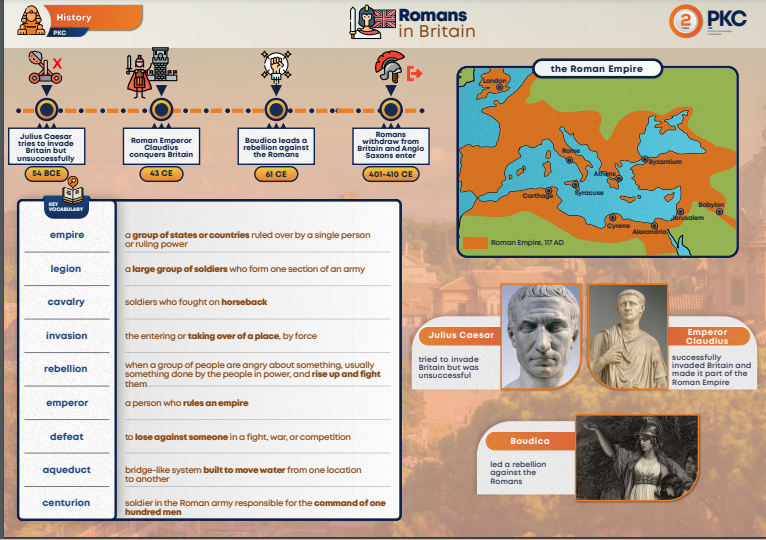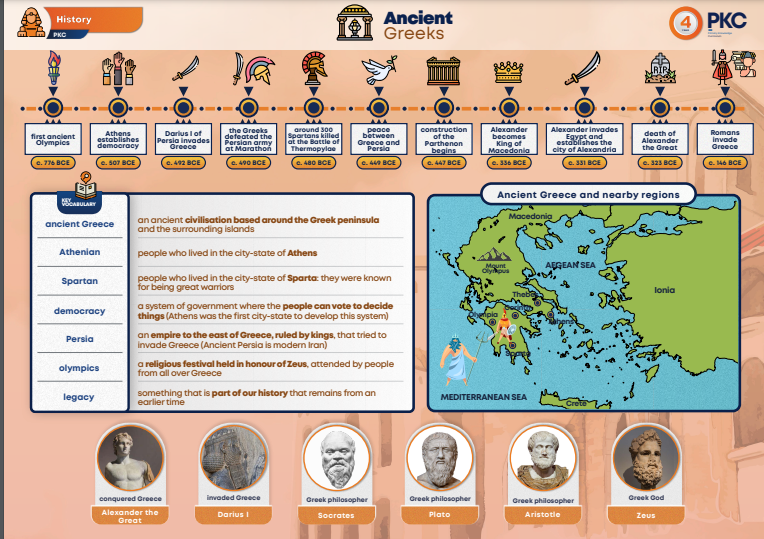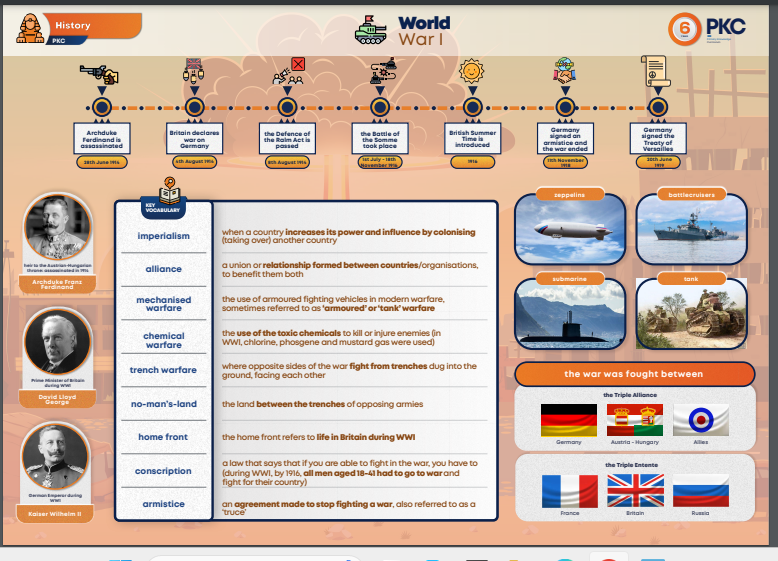What am I going to learn in history?
Autumn 2024
Year 1 - Discovering History
The ‘Discovering History’ unit introduces children to the discipline of history and creates a solid foundation to help our children understand what a historian is, what an archaeologist is, and how sources and evidence help in uncovering facts about the past. Our key objective for this unit is for all pupils to understand that history is the story of the past. This unit will introduce children to the concept of the past, they will look at pictures, hear stories and will begin to understand that there were lives lived before theirs. Children will be able to recognise things that happened in the past and differentiate between events a long time ago (the Crimean War and the work of Mary Seacole) and a very long time ago (dinosaurs and prehistoric periods). They will reflect on things that happened before they were born, and before their parents or grandparents were born. Children can begin to understand the passing of time and are able to start to develop a sense of chronology. As the children progress, they will build on their understanding of ways in which we know about the past, they will develop an awareness of time and build mental timelines, as well as an awareness of past realities and an understanding of historical change.

Year 2 - Romans in Britain
This unit provides children with an early understanding of the Roman Empire in the familiar context of Britain, which will be built on in later years. This unit is the first real introduction of the key substantive concept of empire. They will develop a basic understanding of an empire being a ‘group of states and/or countries ruled over by a single person or ruling power’. This unit introduces children to the Roman invasion of Britain. The pupils will encounter the significant individuals, Julius Caesar and Emperor Claudius. They will also look closely at how the Roman army was organised and evaluate what made them so successful. In addition, the children will learn about the significant rebellion led against the Romans by the Celtic queen of the Iceni, Boudicca. The children will analyse continuity & change between life in Britain before, during and after the Romans, looking at what continued and stayed the same versus what changed. The children will consider the legacy of the Roman invasion on life in Britain. They will learn that the Romans left their influence on the way we speak, read and write, and how they left behind the roads and towns they had built.

Year 3 - Stone Age to Iron Age
Throughout the unit, children will look at the disciplinary concept of continuity and change; a lot of things stay the same for a very long period of time (for example, there is very little change in housing until well into the Iron Age.) However, in another sense, quite a few dramatic changes take place that completely change the lives of people of Britain, such as the introduction of farming. The children will also look at sources and evidence in each lesson. The children will be introduced to some important discoveries that archaeologists have made, such as Skara Brae and Must Farm, which will help them see first-hand how interpretations about the past can be constructed from the objects left behind. The children will also look at how human remains can teach us about British people in the past, such as the discovery of the ‘Cheddar Man’, who would have had dark hair, light eyes and dark skin, and was a Mesolithic hunter-gatherer. Studying this unit helps children to understand the history of Britain as a coherent, chronological narrative, starting from the earliest times.

Year 4 - Ancient Greece
Children will see examples of realistic sculptures and statues that the Greeks created and will learn how their artistic style went on to influence the Roman art of the Renaissance. Children will encounter Alexander the Great and will learn about how he built a vast empire. They will use their knowledge of world geography to recognise the size of Alexander’s empire and will begin to understand how culture, religion and language can spread as an empire grows. Children will learn about the development of Athenian Democracy and will contrast the values held by the citizens of Athens with those of the war-focussed Spartans. Importantly, children will see how long-held hatred between enemies can be put aside when an outside threat, King Darius and his Persian Army, required the city-states to unite to defend Greece from invasion. Studying this period of history provides children with a fascinating insight into how Greeks from different city states lived, the Gods they worshipped and the stories they told of monsters, heroes, challenges and bravery. It equips them with an understanding of what a legacy is; how there are things in our lives, such as how we vote, words we speak, sports we participate in, stories we tell, that remain from an earlier time.

Year 5 - Baghdad 900CE
This unit offers an opportunity for children to compare the construction of Baghdad with other European settlements they have studied. For example, the rebuilding of London after the Great Fire of London. In this unit, children look at the location of Baghdad as a crossing point for traders due to its proximity to the River Tigris. Children will use their prior knowledge of what factors lead to settlements developing locations to understand why Caliph Al-Mansur built Baghdad. Their understanding of rivers will help them to recognise the importance of the River Tigris. Children finish the unit with a powerful mental image of the waters of the River Tigris running black from the ink washed from books seized by the Mongols from the House of Wisdom. During this unit, children are building on well-established substantive concepts of power, religion, civilisation and conflict. Again, as has happened throughout their history curriculum, they see people rise and fall, power change hands and a violent end to a golden age in the history of a city. They also have a chance to build on their ideas of scholarship and wisdom through looking at the focus on academic study in Baghdad in c.900CE.

Year 6 - World War I
This unit focusses on developing two key substantive concepts: Empire and War. An understanding of the role that empire played in European politics at this time is essential to understanding the growing tension that eventually sparked the First World War. The children will begin this unit by looking at the causes that led to the war. They will be able to use their existing knowledge of the British Empire to understand how the desire to create vast empires, and the growing conflict, distrust and dislike amongst European powers meant that the assassination of one person-Archduke Franz Ferdinand-was enough to spark a world war that took the lives of millions of people. During this unit, the children will be able to apply their knowledge of previous wars, such as the Seven Years' War, to look at the similarities and differences between wars fought in the past and World War I. Many historians have argued that World War I was the first truly modern war and the children will be able to explore and discuss the reasons behind this. They will be able to use their knowledge of industrialisation to look at how the role of new technology resulted in the introduction of new weapons such as armoured tanks. Children will continue to build upon their understanding of war tactics, such as trench warfare, and weaponry. While this unit analyses the political context of World War I, looking at the causes and consequences of wartime is also dedicated to learning about what life was like for people at that time. Children will have access to oral history to learn about life on the Western Front. This includes accounts from British soldiers as well as an Indian solider, recruited from the empire to fight for Britain. In contrast, the children will learn about the lives of those on the Home Front and the important role that women, and even children, played in supporting the war effort.

